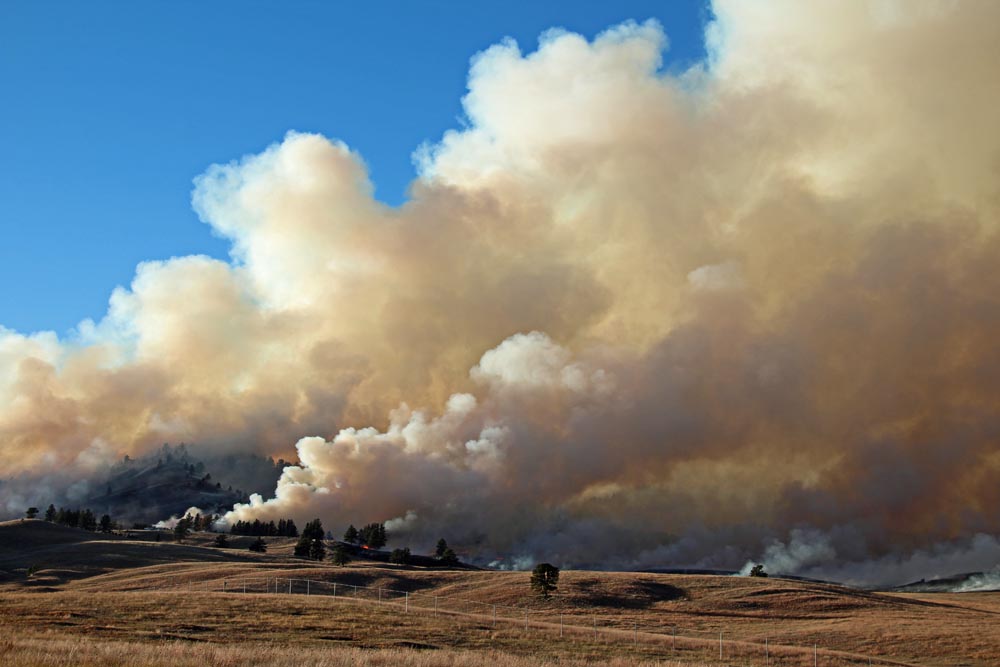Half of the Holy Grail of Firefighter Safety demonstrated at the Happy Camp Fire
The Holy Grail of Firefighter Safety is to have key members of the Operations and Planning Sections knowing two things about a fire in real time:
- The location of the fire, and
- The location of firefighters.
Half of that was provided on the Happy Camp Fire, when true video and infrared video were streamed in real time down to the Incident Command Post from an Air Attack aircraft over the incident. At times the Planning Section Chief controlled the camera, looking at sections of the fire that were key to his situation awareness, mapping responsibilities, decision making and planning.
Below is an excerpt from an article at Fire Aviation.
A suite of video sensors normally used on an Unmanned Aerial Vehicle (UAV) was installed on an Air Attack aircraft working on the 134,056-acre Happy Camp Fire in northern California. The instruments provide normal and infrared video, making it possible for the Air Tactical Group Supervisor and personnel at the Incident Command Post to see in real time through smoke to determine where the priorities should be and where aircraft should be assigned to drop water or retardant.
Read the rest here.
Cleanup after the Boles fire has started
The government has started a massive cleanup in the northern California town of Weed, following the Boles Fire that destroyed 157 residences and 8 commercial structures last month.
Victoria, Australia rolls out new fire trucks
The rollout of Victoria’s new ground-based $82.1 million forest firefighting fleet has begun for the upcoming fire season.
Minister for Environment and Climate Change Ryan Smith said the 306 new firefighting vehicles to be rolled out over a six-year period were specifically designed to provide greater protection to fire crews and would deliver increased water carrying capacity of 630 litres (166 gallons), up from 400 litres (105 gallons) previously.
The new vehicles, based on the Mercedes Benz G Wagon, are fitted with equipment designed for Department of Environment and Primary Industries’ (DEPI) firefighting and planned burning needs, including cabin fire curtains for improved crew safety; and, the highest level of falling object protection for a vehicle of this size.
Attorney argue over evidence in Rim Fire arson case
The attorney representing the person charged with starting the 257,000-acre Rim Fire in the Stanislaus National Forest and Yosemite National Park is arguing that prosecutors aren’t providing all of the evidence they have collected against her client. The fire became the third largest in California recorded history, destroyed 11 homes, and cost $125 million to suppress. In August a Federal Grand Jury indicted 32-year-old Keith Matthew Emerald for starting the fire, charging him with two felonies, “Timber set afire” and “False statement to a government agency”, plus two misdemeanors, “Fire left unattended and unextinguished” and “Violating a fire restriction order”.
Read the story of how Mr. Emerald became a suspect.
Busy wildfire season in Canada’s national parks
From GuelphMercury.com:
The number of wildfires in Canada’s national parks was close to average last summer, but the size of some of those fires made it an unusually hot season.
“We’ve had a more active than normal wildfire season,” said Jeff Weir, Parks Canada’s national fire manager. “A small number of those fires have been quite challenging.”
The agency reported 85 wildfires in the spring and summer of this year. That’s slightly higher than the average of 82.
The amount of forest burned was almost 3,000 square kilometres — an area about half the size of Prince Edward Island.
“That’s higher than normal,” Weir said.
There were several large fires in Wood Buffalo National Park, which straddles the boundary between northern Alberta and the Northwest Territories. Together with a large fire in Banff National Park, the fires accounted for 1,300 square kilometres of forest burned.




